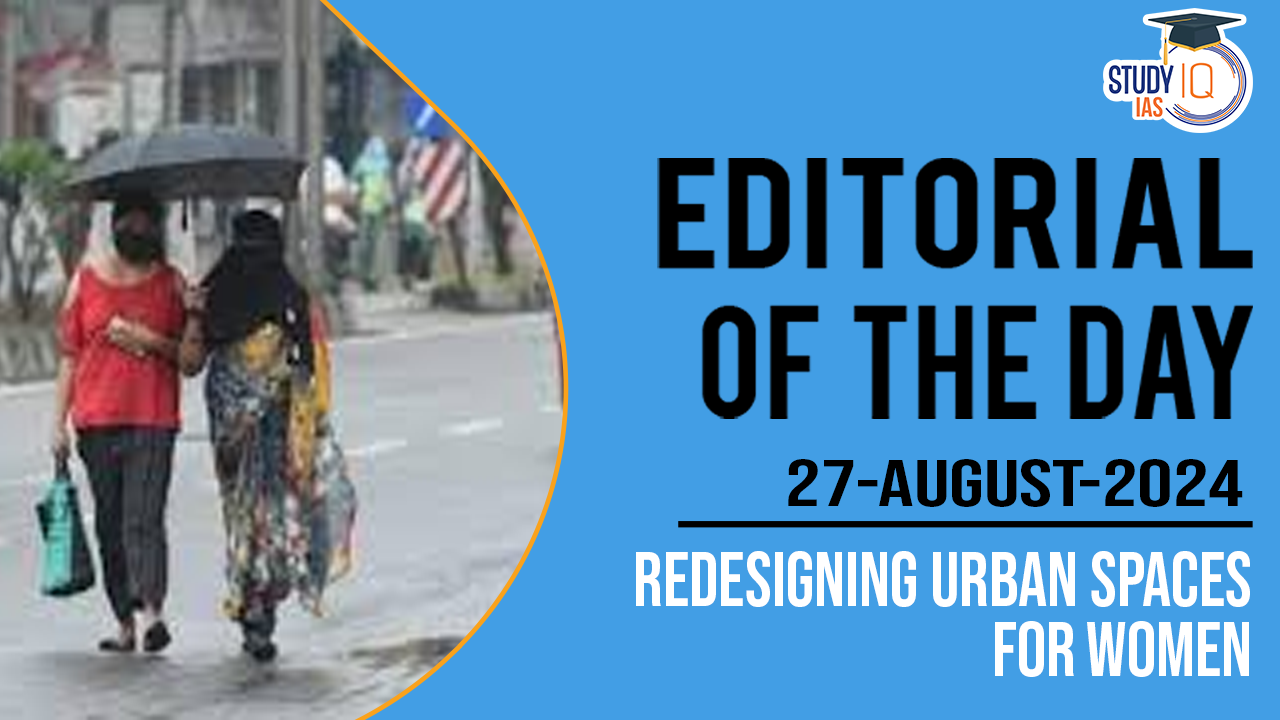Table of Contents
Context
- The recent rape and murder of a resident doctor in Kolkata highlights the ongoing issue of crimes against women in various settings, including workplaces, homes, during commutes, and in public spaces.
- The legal protections of the Post Nirbhaya case have limited impact on reducing crimes against women. This emphasises the need to rethink how urban spaces impact women’s safety.
What are the Post-Nirbhaya Legal Reforms?
- The Criminal Law (Amendment) Act, of 2013, introduced significant changes to sexual crime laws and investigative procedures.
- The Act broadened the definition of rape, enhanced punishments.
- Recommended the establishment of fast-track courts for speedy justice.
- The Nirbhaya Fund, with an initial corpus of ₹1,000 crore, was created to implement women’s safety initiatives.
- However, it has largely been used for installing CCTV cameras and increasing police presence.
Challenges in Urban Mobility and Infrastructure
- Increased development of urban infrastructure (such as wider roads and flyovers) often neglects the need for safe streets, sidewalks, and public transit for women.
- Urban cities lack the essential amenities for women like toilets and feeding rooms.
- The lack of care infrastructure in cities forces women to shoulder the burden of childcare, elderly care, and care for the sick, limiting their full participation in city life.
- Affordable and safe housing is difficult to find especially for women living independently which impedes their ability to pursue urban livelihoods.
- The Pradhan Mantri Awas Yojana-Urban has had minimal impact on improving women’s access to housing and shelter.
- The lack of supportive infrastructure in cities significantly hinders women’s labour participation.
- Example: The female labour force participation rate in urban areas is only 25.2% (April-June, 2024), despite women possessing the necessary skills and education.
- Despite Swachh Bharat Mission’s progress in providing services to women, it still lags in providing access to water and sanitation which adds to women’s burdens.
Policy Recommendations for Gender-Inclusive Urban Planning
- Engendering urban planning: This requires a review of planning laws to ensure cities are not just friendly but also efficient, just, safe, and inclusive for women.
- Expansion of policy frameworks from an urban inclusion perspective, rather than focusing solely on women’s welfare.
- Governments need to formalise women-dominated informal work, create livelihoods closer to homes, and invest in care infrastructure.
- Women’s participation and representation in policy and decision-making are essential for any meaningful reimagining of urban spaces.
- Gender budgeting mechanisms should be promoted and reviewed to ensure they benefit women, with resources allocated for women-centric cities that safeguard their rights.
- A new national scheme for women in urban areas, along with gender inclusion frameworks, should provide actionable steps for gender mainstreaming at the city level.


 World Population Day 2025, Themes, Histo...
World Population Day 2025, Themes, Histo...
 Special Intensive Revision (SIR) in Biha...
Special Intensive Revision (SIR) in Biha...
 List of Military Exercises of India 2024...
List of Military Exercises of India 2024...





















